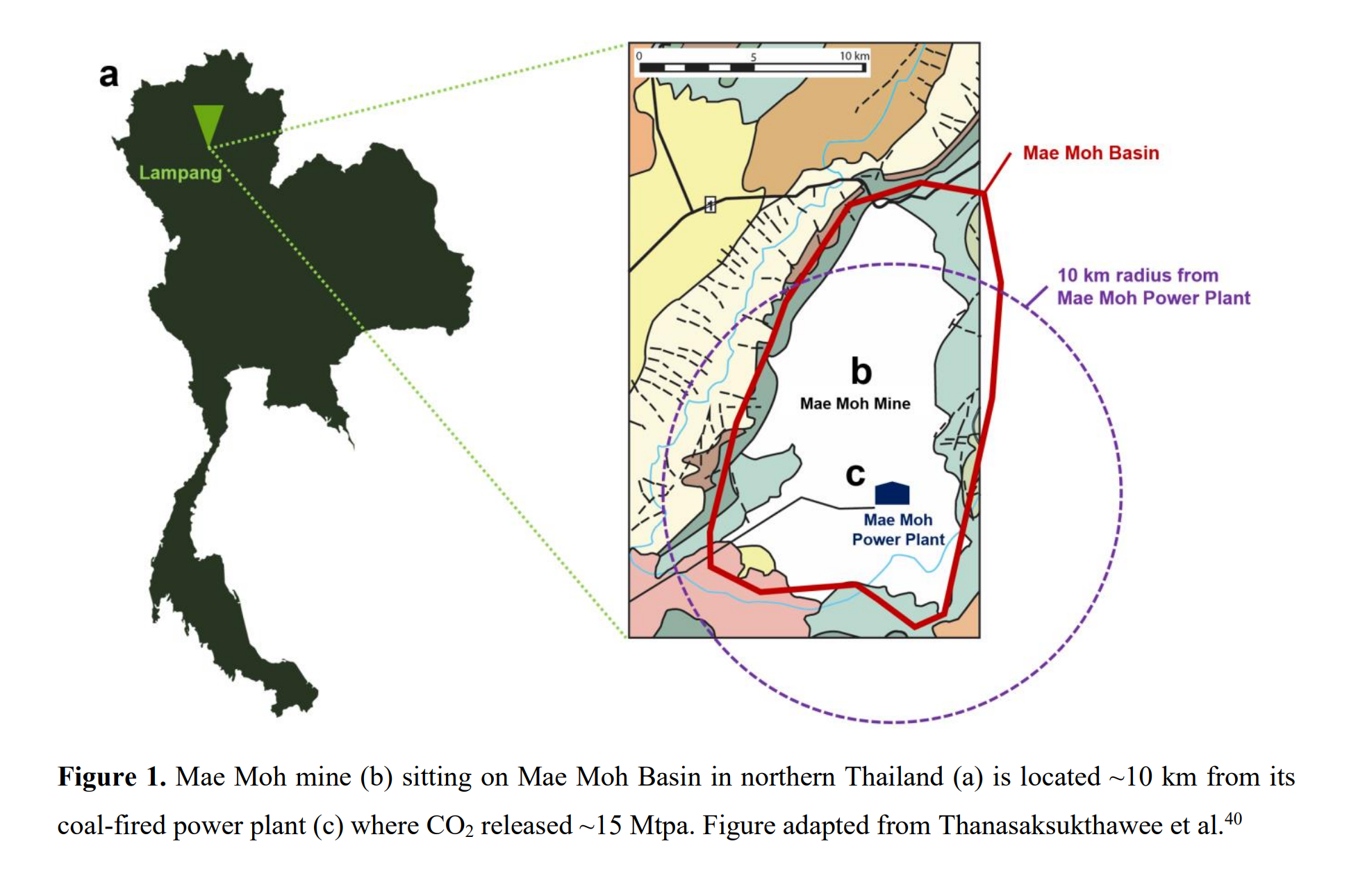Geomechanics Contribution to CO2 Storage Containment and Trapping Mechanisms in Tight Sandstone Complexes: A Case Study on Mae Moh Basin
二氧化碳捕集与储存(CCS)有潜力永久安全地封存高达千兆吨的CO2。最近对将高浓度点源CO2储存在盐水层中给予了关注,泰国考虑了位于北部南邦的湄莫煤电厂及其配套的湄莫盆地煤矿这一陆上案例。尽管该盆地面积大,从源头运输距离短,但目标砂岩储层埋藏深度超过1000米,属于致密储层,数据有限,因此引发了储存可能性的问题。
当前研究旨在检验储层地质力学对CO2储存封存和捕集机制的影响,以及地球化学和储层非均质性的共同贡献,使用储层模拟器——CMG-GEM。以30年的注入率设计,储层压力上升约为破裂压力的77%,但当排除地质力学时增加到约80%。这种压力响应表明,储存安全性与地质力学有关。在粘性力的支配下,CO2羽流更横向迁移,而地质力学明显有助于减少迁移,因为储层岩石强度的约束。储层地质力学有助于减少羽流向更受限制的空间迁移,同时确保泄漏安全,突出了地质力学因素的重要且被忽视的影响。
CO2羽流的时空发展也证实了以地质力学为主的储存封存。储层地质力学归因于其各自的储层流体压力控制了捕集机制的发展,特别是残余和溶解捕集机制。在注入后发现了更安全的储存封存,压力更高,而溶解捕集机制的发展则更少,压力更低。研究结果揭示了在紧密砂岩地层中储存CO2的可能性,其中地质力学在很大程度上支配了羽流迁移和捕集机制的发展。
CMG软件的应用情况:
在本研究中,使用了商业模拟器CMG-GEM进行了一系列数值模拟。CMG-GEM通过有限差分方法对储层中的流体流动和相关现象进行时空离散化模拟。为了模拟CO2捕集机制,CMG-GEM采用了广义Peng-Robinson方程来预测和评估CO2在地质形成过程中的相平衡、溶解度和热力学特性。模拟使用了两个类型的储层构造复合体:(i)背斜和(ii)向斜构造,主要基于Tr1地层,以深入了解盆地的断面动态。模拟考虑了所有地质化学影响,并报告了盐水成分。由于缺乏湄莫盆地的大规模数据,储层边界被假设为封闭或无流系统。进行了3D模拟模型,以在1000年的时间框架内观察所有捕集机制及其对CO2储存安全性的贡献。还监测了CO2羽流迁移的时空模式。在30年的时间内,连续向盐水储层(Tr1)注入CO2,符合湄莫地区CCS项目的预期周期。对不同的注入率进行了敏感性分析,并在模拟中考虑了地质力学特性和盐水组成。
Recognized as a not-an-option approach to mitigate the climate crisis, carbon dioxide capture and storage (CCS) has a potential as much as gigaton of CO2 to sequestrate permanently and securely. Recent attention has been paid to store highly concentrated point-source CO2 into saline formation, of which Thailand considers one onshore case in the north located in Lampang, the Mae Moh coal-fired power plant matched with its own coal mine of Mae Moh Basin. The current study is thus aimed to examine the influence of reservoir geomechanics on CO2 storage containment and trapping mechanisms, with co-contributions from geochemistry and reservoir heterogeneity, using reservoir simulator, CMG-GEM. With the injection rate designed for 30-year injection, reservoir pressure build-ups were 77% of fracture pressure but increased to 80% when geomechanics excluded. Such pressure responses imply that storage security is associated with the geomechanics. Dominated by viscous force, CO2 plume migrated more laterally while geomechanics clearly contributed to lesser migration due to reservoir rock strength constraint. Reservoir geomechanics contributed to less plume traveling into more constrained spaces while leakage was secured, highlighting a significant and neglected influence of geomechanical factor. Spatiotemporal development of CO2 plume also confirms the geomechanics-dominant storage containment. Reservoir geomechanics as attributed to its respective reservoir fluid pressure controls development of trapping mechanisms, especially into residual and solubility traps. More secured storage containment after the injection was found with higher pressure, while less development into solubility trap was observed with lower pressure.




作者单位:
- 泰国清迈大学工程学院矿业与石油工程系
- 奥地利格拉茨科技大学土木工程学院科学系
- 英国曼彻斯特大学化学工程系
- 美国德克萨斯大学奥斯汀分校杰克逊地质科学学院经济地质局
- 泰国亚洲理工学院工程与技术学院地质工程与地球资源工程系
